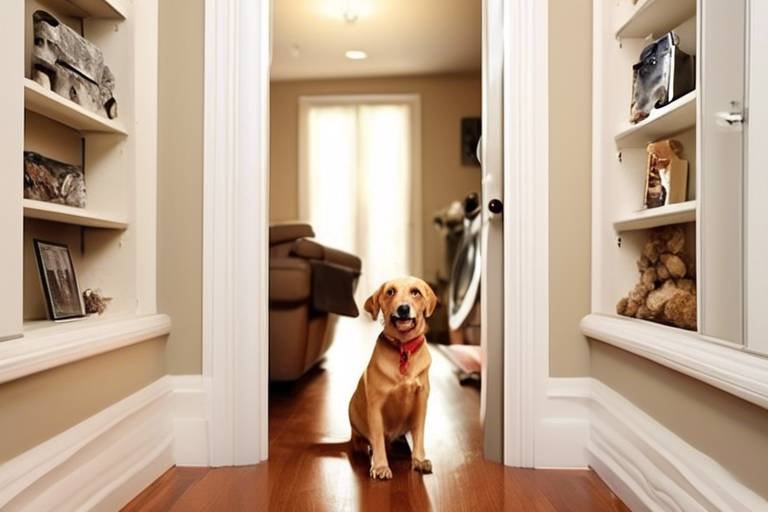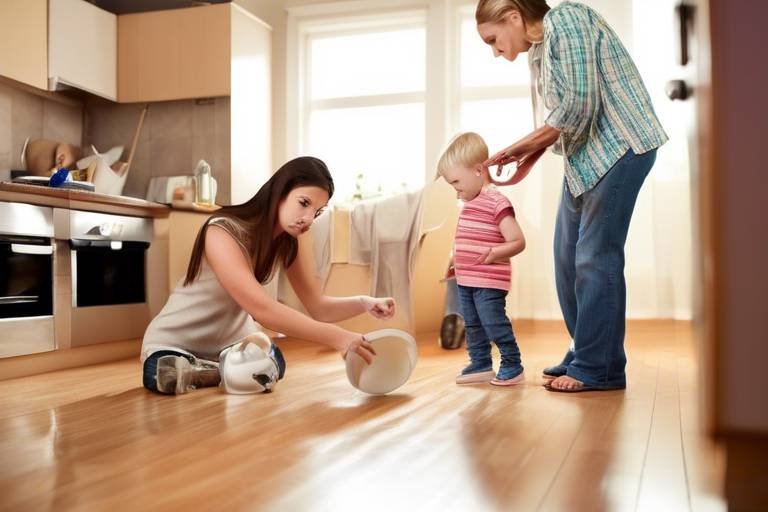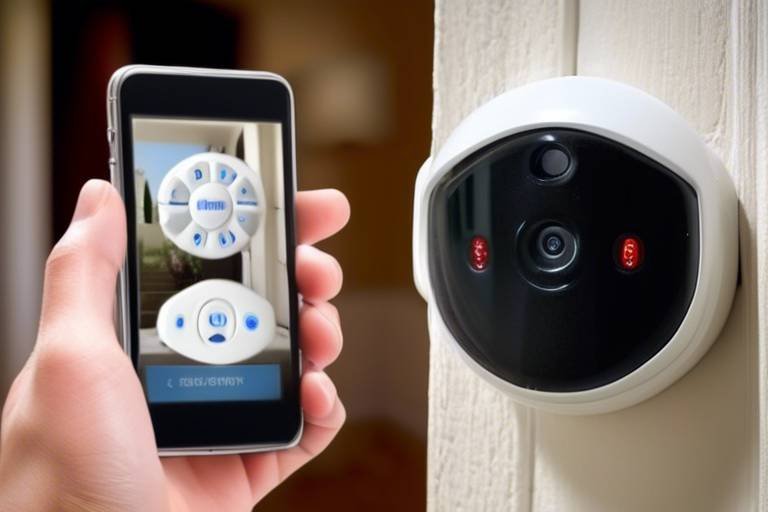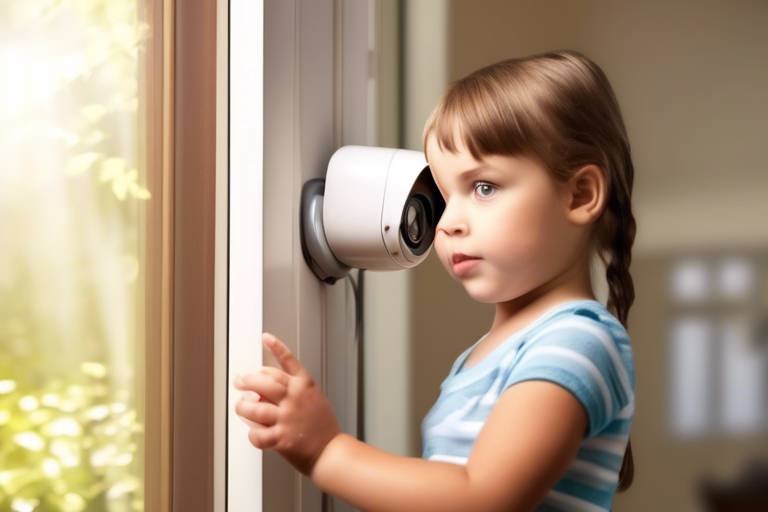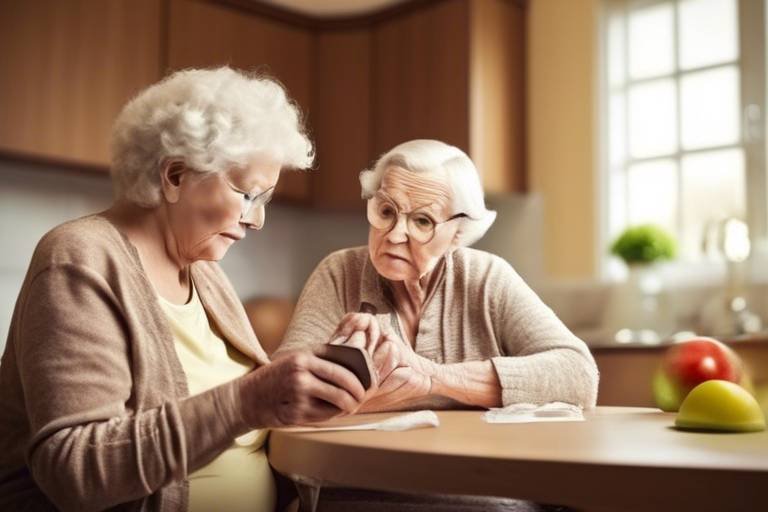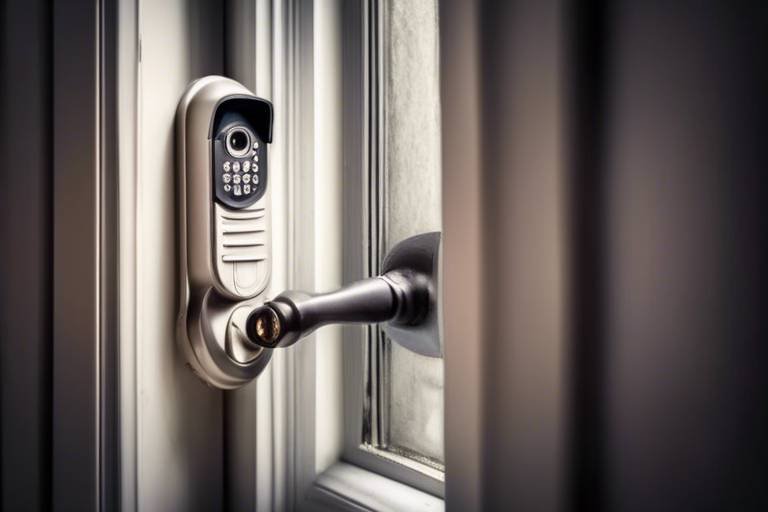Pet-Friendly Home Safety Measures
This article explores essential strategies to ensure your home is safe for pets. From preventing hazards to creating comfortable spaces, these tips will help you maintain a secure environment for your furry friends. In a world where our pets are considered family, it's vital to make our homes as safe and welcoming as possible. Just like we baby-proof our homes for toddlers, pet-proofing is equally important for our furry companions. Think of your home as a playground; if it’s not safe, your pets can easily get into trouble. So, let’s dive into some practical measures that can transform your living space into a pet-friendly sanctuary.
Identifying potential dangers in your home is crucial for pet safety. This section discusses common household items that can pose risks, such as toxic plants, chemicals, and choking hazards, helping you to mitigate these threats. Did you know that many common household plants are toxic to pets? For instance, lilies can be deadly to cats, while dogs may suffer from gastrointestinal issues after nibbling on certain types of ferns. It’s essential to conduct a thorough inventory of your home and identify these hazards. Here’s a quick rundown of some common household items that can pose risks:
- Toxic plants: Keep an eye out for plants like philodendrons, pothos, and azaleas.
- Chemicals: Household cleaners, antifreeze, and certain human foods can be harmful.
- Choking hazards: Small toys, coins, and even food scraps can pose a choking risk.
By being proactive and eliminating these hazards, you can create a safer environment for your pets. Regularly check your home for any potential dangers and make necessary adjustments to keep your furry friends safe.
Designing a pet-friendly living area involves removing hazards and providing secure spaces. This section covers how to arrange furniture and decor to minimize risks while ensuring your pet feels comfortable and at home. Imagine your living room as a cozy nest where your pet can lounge without fear. It’s essential to think about how your furniture is arranged. Make sure there are no sharp corners or unstable items that your curious pet might knock over. Additionally, consider creating a specific area just for your pet, complete with their bed, toys, and blankets. This not only gives them a sense of belonging but also keeps their items organized.
Furniture can be a source of danger for curious pets. This subsection offers tips on choosing pet-friendly materials and securing items that could tip over or cause injury, ensuring a safer environment. When selecting furniture, opt for materials that are durable and easy to clean. For example, leather or tightly woven fabrics are less likely to harbor pet hair and are easier to wipe down. Moreover, securing heavy items, such as bookshelves and cabinets, can prevent them from tipping over if your pet decides to climb or jump on them.
Selecting the right fabrics for furniture can prevent wear and tear from pets. This section discusses the best materials for durability and ease of cleaning, making your home both stylish and practical. Look for fabrics that are stain-resistant and durable, such as microfiber or synthetic blends. These materials can withstand scratches and spills, which is perfect for a household with pets. You might even consider using slipcovers that can be easily removed and washed, keeping your furniture looking fresh and clean.
Heavy furniture and decor can pose risks if not properly secured. This part offers advice on anchoring heavy items to prevent tipping, ensuring that your home is safe for energetic pets. Use brackets or wall anchors to secure heavy bookshelves and cabinets to the wall. This simple step can prevent accidents caused by curious paws or tails knocking things over. Remember, a little precaution goes a long way in keeping your pets safe!
Your yard can be a haven for pets, but it must be secure. This section outlines how to create a safe outdoor environment, including fencing options and monitoring potential hazards in your garden. Ensure your yard is fully fenced and that there are no gaps where your pet could escape. Additionally, be mindful of any plants or chemicals in your garden that could be harmful to pets. A well-maintained yard not only provides a safe space for your pets to roam but also allows them to enjoy the great outdoors without worry.
Various products can enhance pet safety at home. This section highlights must-have items such as gates, pet-proof locks, and safety collars that can help keep your pets secure and protected. Investing in these products is like putting on a seatbelt in a car; it’s all about preventing accidents before they happen. With the right tools, you can create a safer environment for your furry companions.
Pet gates are essential for managing your pet's access to certain areas. This subsection reviews different types of gates, their benefits, and how to select the best option for your home layout. Whether you need a gate to keep pets out of the kitchen or to restrict access to stairs, there are many options available. Look for gates that are sturdy and easy to install, ensuring they fit well in your home’s layout.
Safety collars and ID tags are vital for pet identification. This section discusses the importance of these items and how they can help reunite lost pets with their owners quickly and effectively. A collar with an ID tag is your pet's first line of defense if they ever get lost. Make sure the tags are updated with your current contact information. Additionally, consider microchipping your pet for an extra layer of security.
Q: What should I do if my pet ingests something toxic?
A: If you suspect your pet has ingested something toxic, contact your veterinarian or an emergency animal poison hotline immediately.
Q: How can I keep my pet safe during home renovations?
A: Keep your pet in a separate room away from the renovation area, and ensure that all hazardous materials are out of reach.
Q: Are there pet-safe cleaning products I can use?
A: Yes, look for cleaning products that are labeled as pet-safe or consider using natural alternatives like vinegar and baking soda.
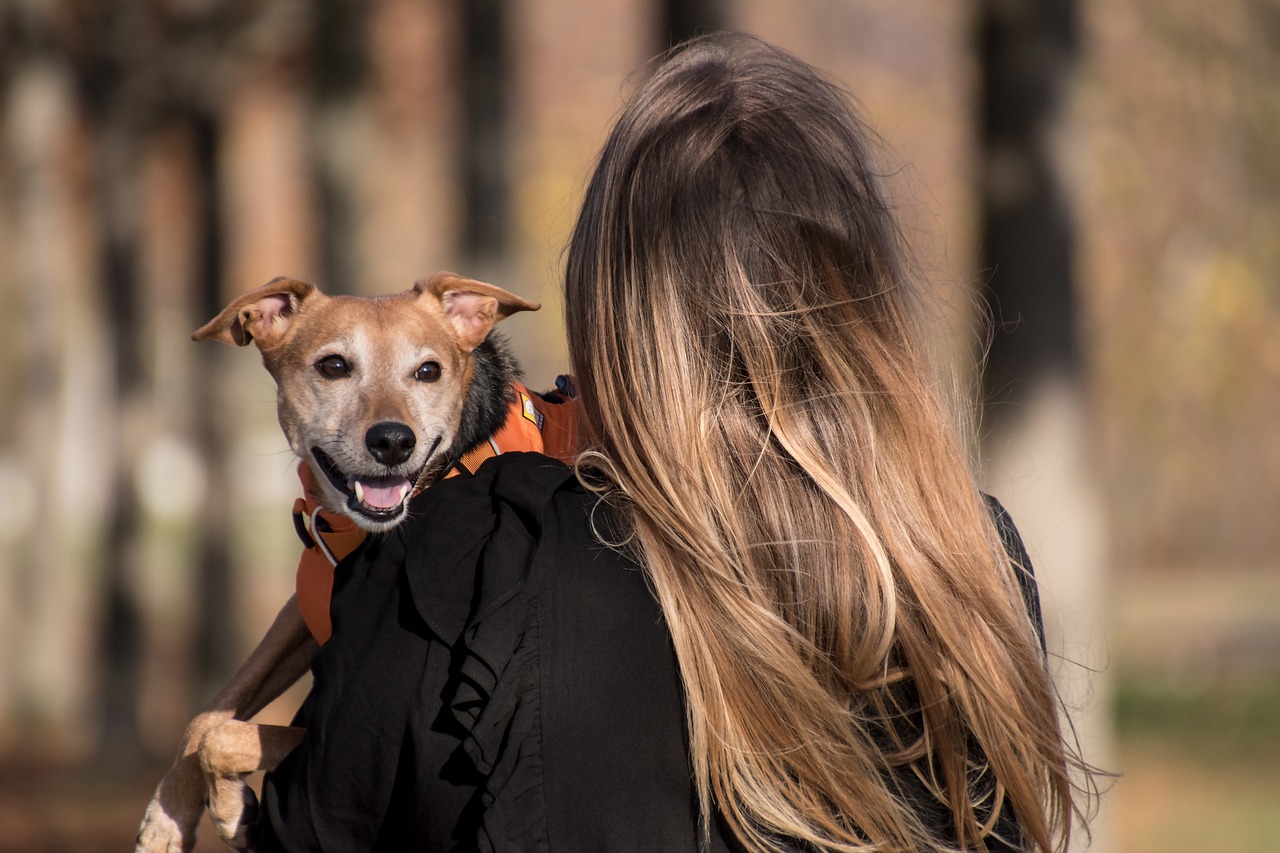
Understanding Common Household Hazards
When it comes to keeping our furry friends safe, understanding the common hazards lurking in our homes is absolutely crucial. Just like we childproof our homes for little ones, we need to consider the unique challenges pets face. From curious kittens to energetic puppies, they tend to explore their surroundings with a sense of adventure that can lead them into dangerous situations. So, what are these hidden threats that we should be aware of?
First off, let’s talk about toxic plants. Many of us love to decorate our homes with greenery, but did you know that some plants can be incredibly harmful to pets? For instance, lilies, azaleas, and sago palms can cause serious health issues if ingested. It's essential to research any plants you plan to bring into your home or garden, ensuring they are pet-friendly. If you already have potentially harmful plants, consider relocating them to areas that are inaccessible to your pets.
Next, we have household chemicals. Cleaning supplies, pesticides, and even certain essential oils can pose significant risks to our pets. For example, products containing bleach or ammonia can lead to respiratory issues or skin irritation. Always store these items in cabinets that are out of reach and consider using pet-safe cleaning products to keep your home sparkling without the risk.
Another common hazard is choking hazards. Pets are notorious for chewing on anything they can find, and small items like coins, rubber bands, or even toys can easily become choking risks. To prevent this, regularly scan your living space for small objects that could be ingested. Additionally, ensure that any toys your pets have are appropriately sized and designed for their particular breed.
It’s also important to be mindful of electrical cords. Curious pets might chew on these, leading to severe injuries or even electrocution. Consider using cord protectors or hiding them behind furniture to keep them out of reach. Furthermore, ensure that any fragile items, such as glass ornaments or picture frames, are secured properly to avoid accidents.
Lastly, let’s not forget about food hazards. Many foods that are perfectly safe for humans can be toxic to pets. Items like chocolate, grapes, onions, and garlic can lead to serious health complications. Always keep these foods well out of reach and educate yourself on what is safe and what isn’t.
By being aware of these common household hazards, you can take proactive steps to create a safer environment for your pets. Remember, a little vigilance goes a long way in ensuring your furry companions stay happy and healthy in your home.
- What are some common plants that are toxic to pets? Some common toxic plants include lilies, azaleas, and sago palms.
- How can I pet-proof my cleaning supplies? Store cleaning supplies in high cabinets and consider using pet-safe alternatives.
- What should I do if my pet ingests something harmful? Contact your veterinarian immediately for advice on how to proceed.
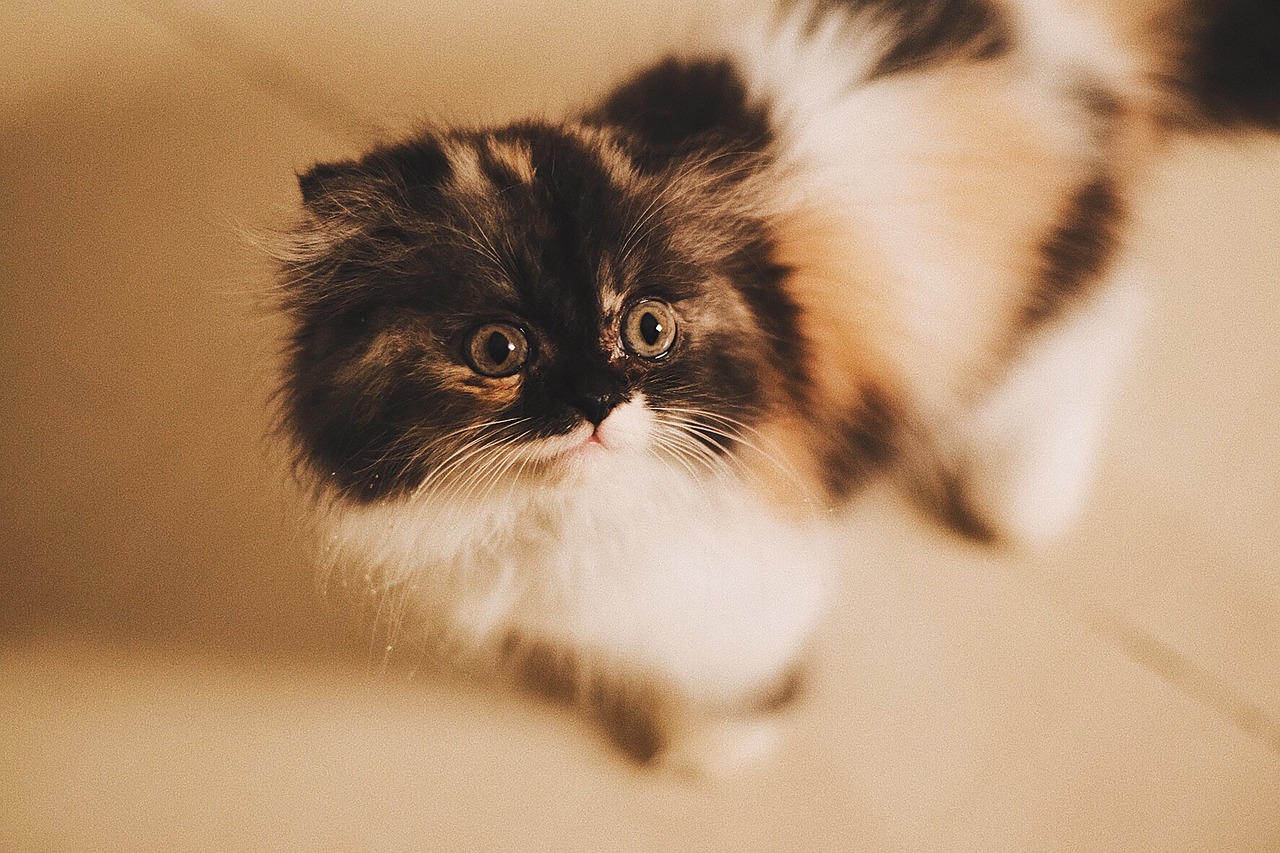
Creating a Safe Living Space
When it comes to our furry companions, creating a safe living space is not just a luxury—it's a necessity! Just like we baby-proof our homes for toddlers, we need to pet-proof them for our four-legged friends. This means thinking ahead and considering how our pets interact with their environment. Have you ever watched your curious cat leap onto a shelf or your energetic dog knock over a lamp? These little moments can lead to big accidents if we’re not careful. So, let's dive into how we can design our homes to keep our pets safe and sound.
First off, it's essential to remove any potential hazards that could harm your pet. For example, consider the placement of your furniture and decor. You might love that beautiful vase on the coffee table, but is it worth the risk of it shattering when your playful pup decides to chase a toy? Instead, opt for items that are both stylish and pet-friendly. A simple rule of thumb is to keep fragile items out of reach and choose sturdy furniture that can withstand the antics of a playful pet.
Another critical aspect of creating a safe living space is ensuring that your pets have their own dedicated areas. These zones should be comfortable, cozy, and free from potential dangers. Think of it as their little sanctuary! You can set up a pet bed in a quiet corner or designate a specific room where they can relax without interruptions. This not only provides them with a sense of security but also helps you manage their access to areas that may not be safe.
In addition, consider the layout of your living space. Arranging furniture in a way that minimizes clutter can significantly reduce the chances of accidents. For instance, if you have a coffee table with sharp corners, you might want to place it against a wall or consider using corner protectors. It’s all about creating an environment where your pets can roam freely without the constant risk of injury.
Don't forget about the outdoor spaces as well! If you have a yard, ensure that it is securely fenced. This not only keeps your pets from wandering off but also protects them from potential dangers like wild animals or busy streets. Regularly check your garden for any toxic plants or harmful chemicals that could pose a threat to your pets. After all, a well-secured outdoor area can be a paradise for your furry friends to explore!
To sum it up, creating a safe living space for your pets is all about foresight and thoughtful design. By considering their needs and potential hazards, you can transform your home into a secure haven for your beloved companions. Remember, a little planning goes a long way in ensuring that your pets can enjoy their space without worry!
- What are some common household items that can be dangerous for pets? Items such as toxic plants, cleaning supplies, and small objects that can be swallowed pose risks to pets.
- How can I tell if a plant is safe for my pet? Research the plant species before bringing it into your home. Many resources provide lists of toxic and non-toxic plants for pets.
- What should I do if my pet gets into something dangerous? Contact your veterinarian or an emergency pet clinic immediately for advice and assistance.
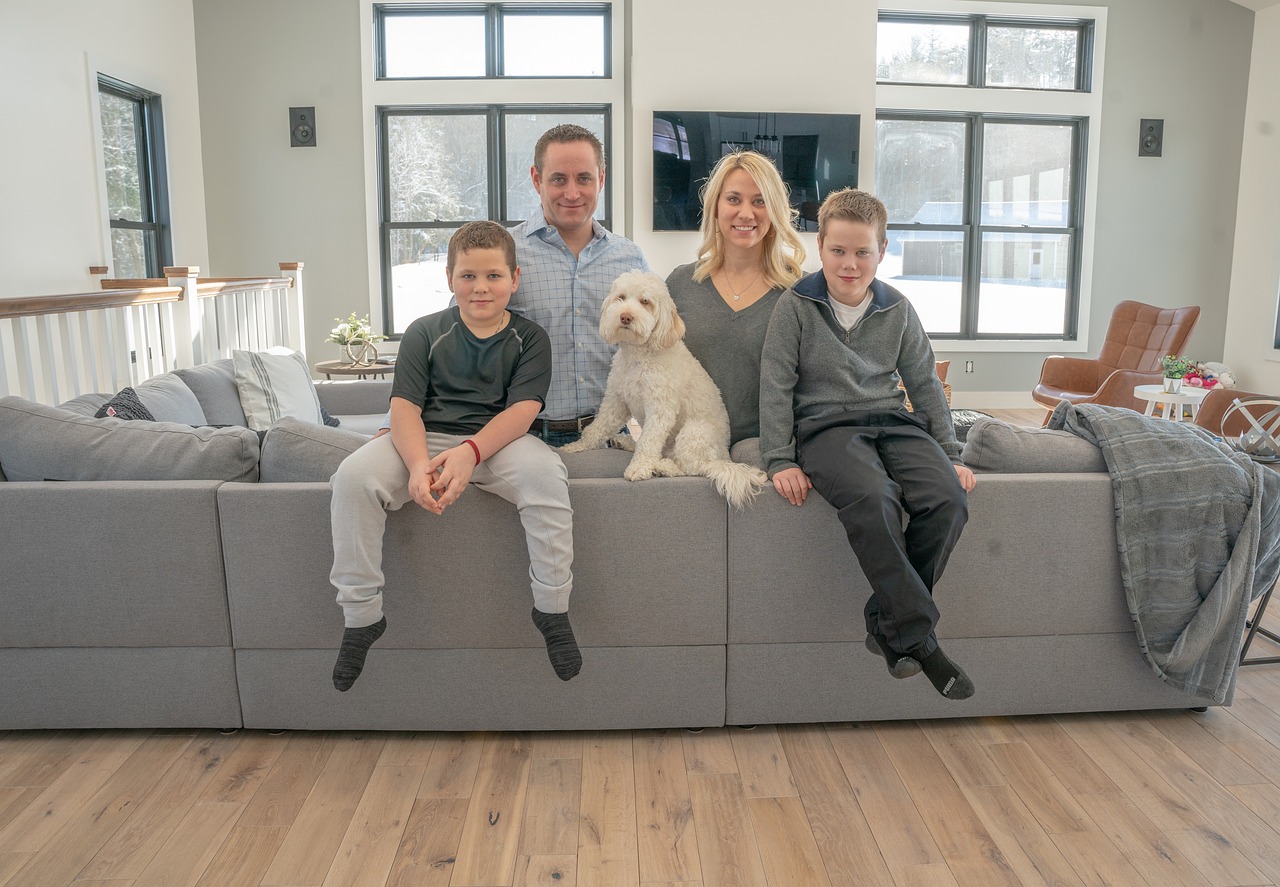
Pet-Proofing Your Furniture
When it comes to making your home a safe haven for your furry friends, pet-proofing your furniture is a crucial step that often gets overlooked. Think about it: pets are naturally curious creatures, and their playful antics can sometimes lead to accidents. By taking a few simple precautions, you can create a secure environment that allows both you and your pet to relax. One of the first things to consider is the materials used in your furniture. Opting for durable and easy-to-clean fabrics can save you a lot of headaches down the road. For instance, materials like microfiber or leather are not only stylish but also resistant to stains and easy to wipe clean. Imagine your pup jumping up on the couch after a muddy walk—having a fabric that can withstand such wear and tear is a game changer!
Additionally, it’s essential to secure any items that could potentially tip over. Have you ever seen a cat leaping onto a shelf, only to send a decorative vase crashing to the ground? It’s a heart-stopping moment! To avoid such mishaps, consider anchoring heavy furniture, like bookshelves or dressers, to the wall. This simple measure can prevent injuries to your pets and protect your belongings. You can use brackets or straps to secure these pieces, giving you peace of mind. And don't forget about those tempting cords and cables that can easily become chew toys for your curious pets. Using cord covers or organizing them neatly can significantly reduce the risk of accidents.
Moreover, you can enhance safety by choosing furniture with rounded edges instead of sharp corners. This small design choice can make a big difference, especially for energetic puppies who might not yet have mastered their coordination. If you already have furniture with sharp edges, consider using corner guards to soften the blow. These guards can be easily applied and are often made from soft materials that can absorb impact.
Lastly, remember that your pets need their own space, too! Designate a cozy area with pet-friendly furniture where they can lounge comfortably. Whether it’s a soft pet bed or a stylish pet sofa, having their own spot can keep them off your main furniture, reducing wear and tear. Plus, it gives them a sense of ownership and security in their environment. By implementing these pet-proofing strategies, you can create a harmonious living space where both you and your pets can thrive.
- What materials are best for pet-friendly furniture? Fabrics like microfiber, leather, and canvas are durable and easy to clean, making them ideal for homes with pets.
- How can I prevent my pet from damaging my furniture? Secure heavy items, use cord covers, and opt for furniture with rounded edges to minimize risks.
- Is it necessary to have a designated pet area? Yes, having a designated space for your pets can help keep them comfortable and reduce wear on your main furniture.
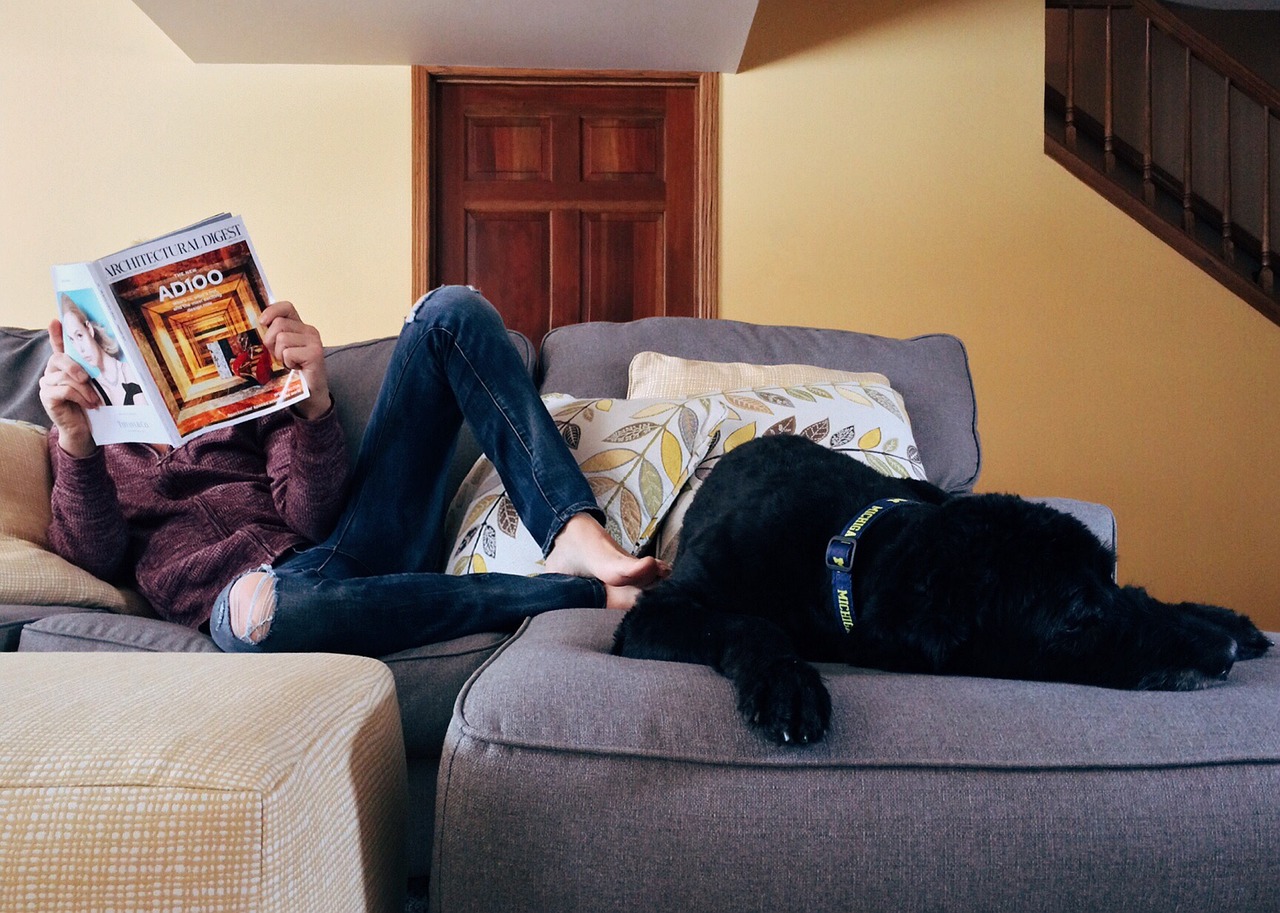
Choosing Durable Fabrics
When it comes to creating a pet-friendly home, one of the most important factors to consider is the choice of fabrics for your furniture and decor. After all, our furry companions can be quite the handful, and selecting the right materials can save you from a world of wear and tear. Think of your home as a cozy fortress, where durability is your best ally against the inevitable scratches, spills, and fur that come with pet ownership.
So, what should you look for when choosing fabrics? First and foremost, you want to focus on stain-resistant materials. Fabrics like microfibers and treated cotton are excellent choices because they repel liquids and are easy to clean. Imagine a spill happening right in the middle of your favorite couch—no one wants to deal with that! With the right fabric, a simple wipe can save the day.
Another key aspect is the strength and durability of the fabric. Look for materials that can withstand the daily antics of your pets. For instance, canvas and denim are tough fabrics that can handle rough play and are less likely to show wear over time. You might even consider outdoor fabrics, which are designed to resist fading and are often water-resistant, making them an excellent option for indoor use as well.
Additionally, consider the texture of the fabric. While soft materials like velvet may seem inviting, they can be a magnet for pet hair and are often harder to clean. Instead, opt for tightly woven fabrics that are less likely to trap fur and are easier to vacuum. A great analogy here is choosing a good pair of shoes—just like you wouldn’t wear delicate heels to a dog park, you shouldn’t choose delicate fabrics for your pet-friendly home.
To help you visualize your options, here’s a quick comparison table of popular pet-friendly fabrics:
| Fabric Type | Durability | Stain Resistance | Easy to Clean |
|---|---|---|---|
| Microfiber | High | Yes | Yes |
| Cotton Canvas | Medium | Moderate | Yes |
| Denim | High | No | Moderate |
| Outdoor Fabric | High | Yes | Yes |
In summary, choosing durable fabrics for your furniture is not just about aesthetics; it’s about creating a practical and safe environment for your pets. By selecting materials that are both stylish and resilient, you can ensure that your home remains a welcoming haven for both you and your furry friends. Remember, a little foresight in fabric choice can lead to a lot of peace of mind in the long run!
Q: What are the best fabrics for pet owners?
A: The best fabrics for pet owners include microfiber, denim, and outdoor fabrics due to their durability and stain resistance.
Q: How can I clean pet stains from my furniture?
A: For most fabrics, a mixture of mild soap and water can be effective. Always check the manufacturer's care instructions first!
Q: Are there any fabrics I should avoid?
A: Yes, avoid delicate fabrics like silk or velvet, as they can easily get damaged and are harder to clean.
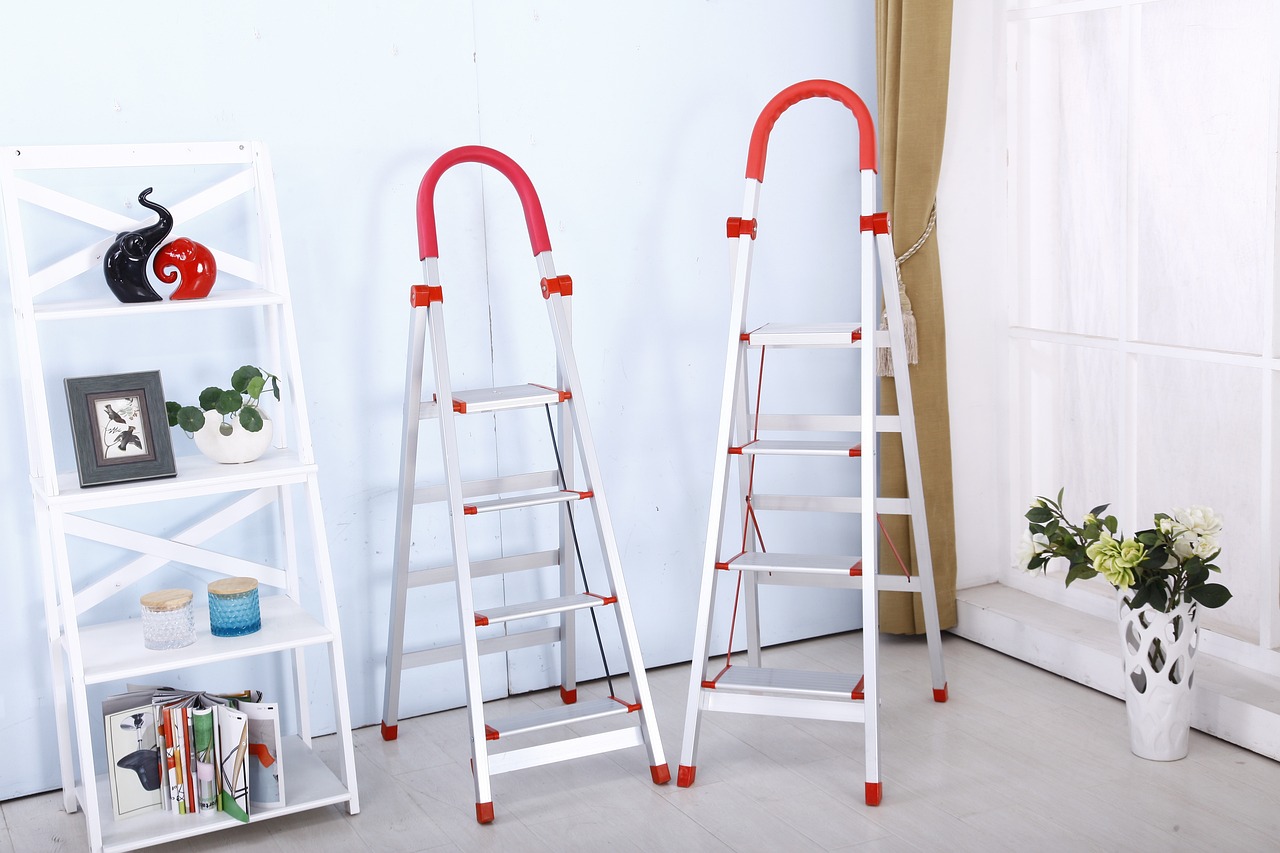
Securing Heavy Items
When it comes to creating a safe environment for your pets, one of the often-overlooked aspects is the securing of heavy items around your home. Imagine your playful puppy or curious kitten darting around the living room, only to accidentally bump into a heavy bookshelf or a tall lamp. The results can be disastrous, not just for your furry friend but also for your cherished belongings. Therefore, it’s essential to take proactive steps to ensure that heavy furniture and decor are anchored securely to prevent any potential accidents.
Firstly, consider the layout of your home. Is there a particular area where heavy items are prone to tipping over? It’s crucial to identify such spots and take action. For instance, if you have a large television atop a stand, make sure to use anti-tip straps to secure it to the wall. These straps are relatively inexpensive and can provide peace of mind, knowing that your pet won’t inadvertently cause the TV to topple over.
In addition to televisions, heavy furniture pieces like bookshelves, dressers, and cabinets should also be anchored. You can use brackets or straps that are designed for this purpose. Not only do these tools help prevent tipping, but they also assist in keeping your furniture stable during events like earthquakes, which is an added bonus!
Here’s a quick overview of some common heavy items that should be secured:
- Bookshelves
- Televisions and entertainment centers
- Dressers and cabinets
- Large art pieces or mirrors
Another effective method is to rearrange your furniture. By placing heavier items against walls and away from high-traffic areas, you reduce the chances of your pet accidentally bumping into them. For instance, if you have a large potted plant that could potentially tip over, consider moving it to a corner where your pet is less likely to venture.
Lastly, don’t forget to regularly check the stability of your heavy items. Over time, things can shift, and what was once secure may no longer be. Make it a habit to inspect these items periodically, ensuring that everything remains in its place. By taking these precautionary measures, you not only enhance the safety of your pets but also create a more harmonious living environment for everyone in your home.
Q: What are the best materials for securing heavy furniture?
A: Anti-tip straps or brackets made from sturdy metals are highly recommended for securing heavy furniture. They are designed to withstand significant force and prevent tipping.
Q: How can I tell if my furniture needs to be secured?
A: If your pet is curious or tends to jump on furniture, it’s a good idea to secure any heavy or tall items that could potentially tip over. Regularly assess your living space for any potential hazards.
Q: Can I use DIY methods to secure heavy items?
A: While DIY methods can be effective, it’s essential to ensure that they are safe and reliable. Using professional-grade materials and following manufacturer instructions is the best way to ensure safety.
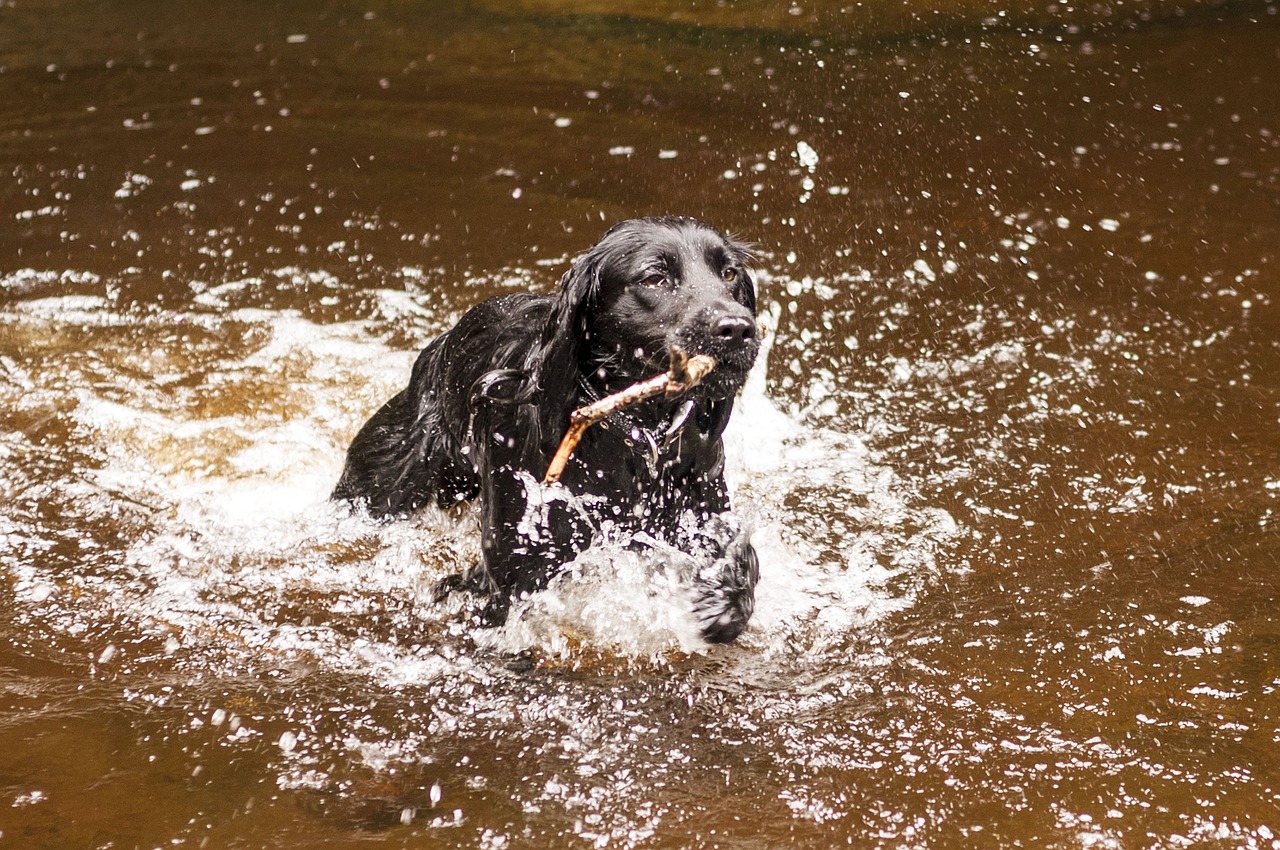
Safe Outdoor Spaces
Creating a safe outdoor environment for your pets is not just about letting them roam free; it's about ensuring they can explore without encountering hazards. Your yard can be a paradise for your furry friends, but it can also hide potential dangers. From sharp objects to toxic plants, the outdoor space needs to be carefully managed. Imagine your pet bounding through the grass, tail wagging, free from worry—that's the goal!
First and foremost, consider the type of fencing you have. A sturdy fence is essential to keep your pets contained and safe from wandering off or encountering other animals. Depending on the size and agility of your pet, you might need a fence that’s taller or has a design that prevents climbing or digging. Here’s a quick comparison of some popular fencing options:
| Type of Fence | Pros | Cons |
|---|---|---|
| Wooden Fence | Durable, customizable | Can rot, may require maintenance |
| Chain Link Fence | Cost-effective, easy to install | Less privacy, can be climbed |
| Vinyl Fence | Low maintenance, long-lasting | Higher initial cost |
| Electric Fence | Invisible boundary, effective training tool | Requires training, may not be suitable for all pets |
In addition to fencing, it's crucial to monitor your yard for any potential hazards. This includes removing toxic plants like oleander, azaleas, and certain types of lilies, which can be harmful if ingested. Regularly check your outdoor space for items like garden tools, chemicals, or small objects that could pose a choking hazard. Remember, just like a toddler, pets are naturally curious and will explore their surroundings, so it’s up to you to keep them safe!
Another aspect to consider is the presence of wildlife. Depending on where you live, your yard might attract critters like raccoons, squirrels, or even snakes. These animals can pose risks to your pets, either through aggression or by carrying diseases. Installing motion-activated lights or noise deterrents can help keep unwanted visitors at bay.
Finally, think about providing shaded areas and water sources for your pets. Just as we need to stay hydrated and cool, our pets do too! Setting up a small kiddie pool or providing fresh water in shaded areas can make your outdoor space a comfortable retreat for your pets during those hot summer days.
In conclusion, ensuring safe outdoor spaces for your pets is a multifaceted approach that involves proper fencing, hazard monitoring, wildlife management, and comfort considerations. By taking these precautions, you can create an outdoor haven where your pets can enjoy the fresh air and sunshine without any worries. So, get out there, make your yard a pet paradise, and watch them thrive!
- What are some common outdoor hazards for pets?
Common hazards include toxic plants, sharp objects, chemicals, and wildlife. Regularly inspecting your yard can help mitigate these risks.
- How can I prevent my pet from escaping my yard?
Installing a secure fence is key. Ensure it’s tall enough and check for any gaps where a pet could escape. Consider using additional deterrents like motion-activated lights.
- What should I do if I find a wild animal in my yard?
Keep your pets indoors and contact local wildlife control for assistance. Avoid approaching the animal yourself, as it may feel threatened and act aggressively.
- How can I keep my pets cool in the summer?
Provide shaded areas, fresh water, and consider setting up a small pool for them to cool off. Always monitor them for signs of overheating.

Essential Pet Safety Products
When it comes to ensuring the safety of your beloved pets, investing in the right pet safety products can make all the difference. These products not only help in preventing accidents but also provide peace of mind for pet owners. Imagine a scenario where you can relax in your living room without constantly worrying about what your furry friend might get into. Sounds great, right? That's where these essential items come into play!
First off, let's talk about pet gates. These are invaluable for controlling your pet's access to certain areas of your home, particularly if you have rooms that are off-limits or if you want to keep your pet away from hazardous areas like the kitchen. There are various types of pet gates available, including pressure-mounted gates, which are perfect for doorways, and hardware-mounted gates that can be securely fastened to walls. Choosing the right gate will depend on your home's layout and your pet's size. For instance, if you have a large dog, a sturdy gate that can withstand some pushing is essential.
Next up, we have pet-proof locks. These locks are designed to prevent curious paws from opening cabinets and drawers that may contain hazardous substances or sharp objects. Think of them as an extra layer of security. You wouldn’t want your pet to accidentally ingest cleaning supplies or chew on your favorite pair of shoes, right? Installing pet-proof locks is a simple yet effective way to keep your home safe. You can find locks that can be easily installed on existing cabinets, making it a hassle-free upgrade.
Another must-have is a safety collar combined with an ID tag. These items are crucial for identification in case your pet gets lost. A collar with an ID tag that includes your contact information can significantly increase the chances of your furry friend being returned to you. Additionally, consider investing in collars that have a breakaway feature; these collars are designed to snap open if they get caught on something, which can prevent choking or injury. It’s a small investment for a huge return when it comes to your pet’s safety.
For those who love spending time outdoors with their pets, having a leash with a safety feature is essential. Look for leashes that have reflective materials for visibility during nighttime walks. This simple addition can make a world of difference in keeping both you and your pet safe. Plus, it adds an extra layer of security when you're out and about, especially in low-light conditions.
Lastly, consider using a pet carrier that is both comfortable and secure. Whether you're heading to the vet or going on a trip, a well-constructed carrier can keep your pet safe while providing them with a cozy space. Look for carriers that have ventilation, are easy to clean, and are the right size for your pet. This way, you can ensure that your furry friend travels in style and safety.
In summary, investing in essential pet safety products not only enhances the well-being of your pets but also allows you to enjoy your time together without constant worry. From pet gates and locks to safety collars and carriers, these items are designed to keep your furry companions safe and sound. Remember, a little precaution can go a long way in creating a secure environment for your pets!
- What are the most important safety products for pets? The most essential safety products include pet gates, pet-proof locks, safety collars with ID tags, reflective leashes, and secure pet carriers.
- How can I ensure my pet’s safety outdoors? Create a secure outdoor space by using sturdy fencing, monitoring potential hazards in your garden, and using a leash with safety features during walks.
- Are pet-proof locks difficult to install? No, pet-proof locks are generally easy to install and can be added to existing cabinets and drawers without professional help.

Choosing the Right Pet Gates
When it comes to creating a safe environment for your furry friends, pet gates are an essential tool in your arsenal. These gates not only help manage your pet's access to certain areas of your home but also provide peace of mind when you need to keep them out of trouble. With a variety of options available, selecting the right pet gate can feel overwhelming. So, how do you choose the perfect one for your home?
First, consider the size and breed of your pet. If you have a small dog or a cat, a simple gate that stands about two feet tall might suffice. However, for larger breeds or energetic puppies, you’ll want to opt for a sturdier gate that is at least 30 inches high. Remember, some pets are great jumpers, so height is a crucial factor!
Next, think about the location where you plan to set up the gate. Will it be at the top of the stairs, in a doorway, or in a wide-open space? Different locations may require different types of gates. For instance, a pressure-mounted gate is perfect for doorways, while a hardware-mounted gate is safer for the top of stairs since it can be securely fastened to the wall.
Additionally, consider the material of the gate. Pet gates come in various materials, including wood, metal, and plastic. Wooden gates can add a touch of elegance to your home decor, while metal gates are often more durable and can withstand the wear and tear of active pets. If you’re leaning towards plastic, ensure it’s sturdy enough to handle your pet’s antics.
Another important factor to evaluate is the gate's design. Some gates come with a swinging door that allows easy access for humans while keeping pets contained. Others are designed to be completely removable or foldable, making them convenient for storage. When choosing a design, think about how often you will need to pass through the gate and how much space you have available.
Lastly, always check for safety features. Look for gates that have a secure locking mechanism and are free from sharp edges. Some gates even come with additional features like pet-proof locks or adjustable widths to fit various openings. The more secure the gate, the less likely your pet will find a way to escape!
In summary, when choosing the right pet gate, keep these factors in mind:
- Size and breed of your pet
- Location of the gate
- Material of the gate
- Design and accessibility
- Safety features
By considering these elements, you can select a pet gate that not only keeps your pet safe but also complements your home’s aesthetic. Remember, a well-chosen pet gate is an investment in your pet’s safety and your peace of mind!
Q: Can I use a regular baby gate for my pets?
A: While baby gates can be effective for small pets, they may not be sturdy enough for larger or more active animals. It’s best to choose a gate specifically designed for pets.
Q: How do I know which height is appropriate for my pet?
A: Measure your pet’s jumping ability and consider their breed. A good rule of thumb is to choose a gate that is at least 6 inches taller than your pet's jumping height.
Q: Are there any gates that can be used outdoors?
A: Yes, there are outdoor pet gates made from weather-resistant materials. Ensure they are securely installed to prevent any escape attempts.
Q: How do I install a hardware-mounted gate?
A: Follow the manufacturer’s instructions carefully. Typically, you will need to drill holes into your wall to secure the gate. Make sure to use wall anchors if necessary for added stability.
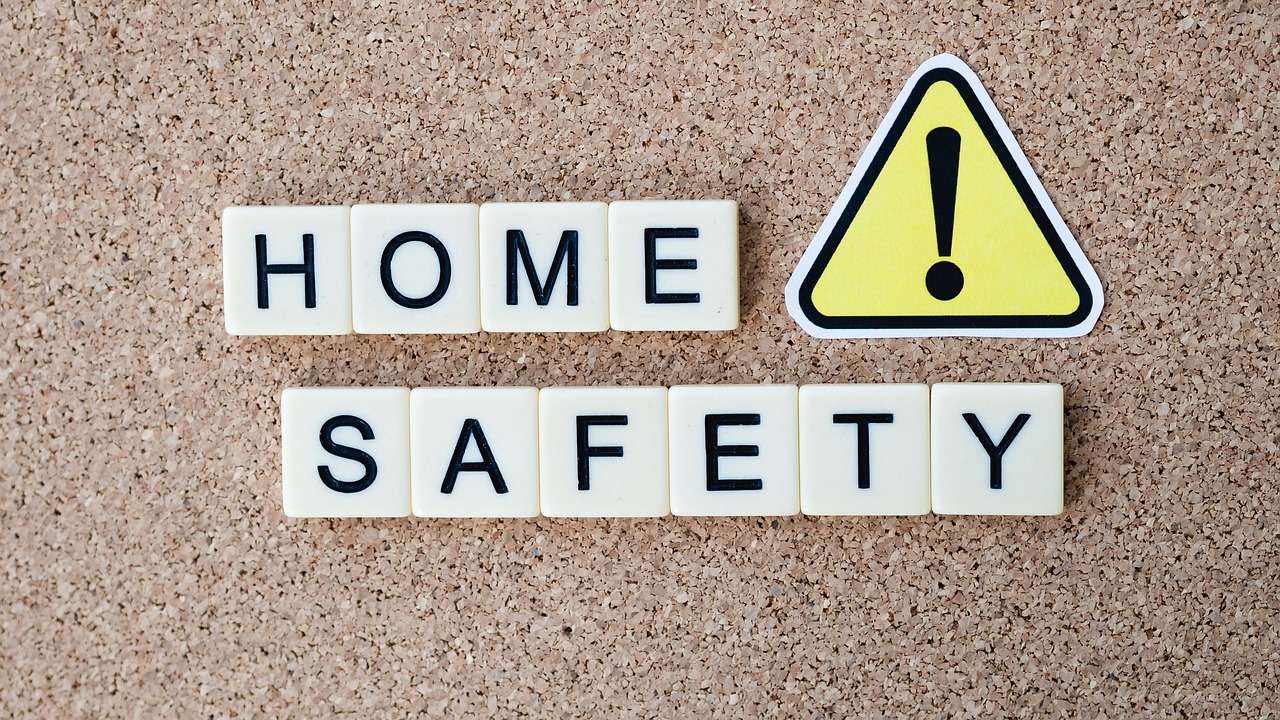
Investing in Safety Collars and ID Tags
When it comes to ensuring your pet's safety, is not just a good idea; it's essential. Imagine your furry friend dashing out the door during a moment of excitement—what happens if they get lost? A simple collar with an ID tag can be the difference between a joyful reunion and a long, stressful search. These items serve as a lifeline, providing vital information about your pet, such as their name, your contact number, and any special medical needs they may have.
But what should you look for when choosing the right safety collar? First, it’s important to select a collar that is both comfortable and durable. Look for materials that can withstand wear and tear, especially if your pet is an active one. Additionally, consider the type of closure on the collar. Breakaway collars are particularly beneficial for pets that like to explore, as they come apart easily if they get caught on something, reducing the risk of choking or injury.
Now, let’s talk about the ID tags. You want to ensure that the tag is not only securely attached to the collar but also clearly legible. A good ID tag should include:
- Your pet's name
- Your phone number
- Your address (if space allows)
- Any important medical information (like allergies or special needs)
In addition to traditional tags, consider investing in a microchip for your pet. Microchipping adds an extra layer of security, as it allows animal shelters and vets to identify your pet even if they lose their collar. It's a simple procedure and can be done during a routine vet visit, providing peace of mind for pet owners.
Lastly, remember that updating your ID tags is just as important as having them in the first place. Whenever you move or change your phone number, make sure to update your pet's tags. Keeping this information current is crucial, as it ensures that anyone who finds your pet can easily get in touch with you.
In summary, investing in safety collars and ID tags is a small but significant step towards keeping your beloved pets safe. When you combine a comfortable collar with a clear, updated ID tag, you create a safety net that can help bring your furry family member home in case they wander off. So, take a moment today to check your pet's collar and ID tag—because when it comes to safety, every detail counts!
Q1: How often should I check my pet's collar and ID tag?
A1: It's a good practice to check your pet's collar and ID tag regularly, at least once a month. Ensure that the collar is not too tight or too loose and that the ID tag is still legible and securely attached.
Q2: What should I do if my pet loses their collar?
A2: If your pet loses their collar, immediately replace it and ensure that an ID tag is attached. Consider getting a microchip for your pet as an additional safety measure.
Q3: Are there any specific materials I should avoid when choosing a collar?
A3: Yes, avoid collars made of materials that can easily fray or break, such as thin nylon. Opt for durable materials like leather or heavy-duty nylon that can withstand your pet's activities.
Frequently Asked Questions
- What are some common household hazards for pets?
Common household hazards include toxic plants, cleaning chemicals, small items that can be swallowed, and electrical cords. It's essential to identify these risks and remove or secure them to create a safe environment for your furry friends.
- How can I create a pet-friendly living space?
To create a pet-friendly living space, start by removing hazards like sharp objects and toxic plants. Arrange furniture to create open spaces for your pets to move around comfortably. Also, consider using rugs and mats that are easy to clean in case of accidents.
- What materials should I choose for pet-proof furniture?
When selecting furniture, look for durable fabrics that resist stains and scratches. Materials like microfiber and leather are often good choices. Additionally, avoid delicate fabrics that can easily be damaged by playful paws.
- How do I secure heavy furniture to prevent tipping?
To secure heavy furniture, use wall anchors or brackets to attach items like bookshelves and dressers to the wall. This prevents them from tipping over if your pet jumps on them or bumps into them, ensuring a safer environment.
- What should I consider when creating a safe outdoor space for my pets?
Ensure your yard is fenced securely to prevent escapes. Regularly check for any potential hazards, such as toxic plants or sharp objects. Additionally, provide shaded areas and fresh water to keep your pets comfortable while they enjoy the outdoors.
- What are essential pet safety products I should have?
Some essential pet safety products include pet gates, safety collars, ID tags, and pet-proof locks. These items help manage your pet's access to certain areas and ensure they can be identified quickly if they get lost.
- How do I choose the right pet gate for my home?
When choosing a pet gate, consider the size of your pet and the areas you want to restrict. Look for gates that are sturdy, easy to install, and have a secure locking mechanism. Some gates are adjustable, making them suitable for various openings in your home.
- Why are safety collars and ID tags important?
Safety collars and ID tags are crucial for pet identification. They help ensure that if your pet gets lost, they can be quickly returned to you. Always make sure your pet's collar fits properly and that the ID tag has up-to-date contact information.

